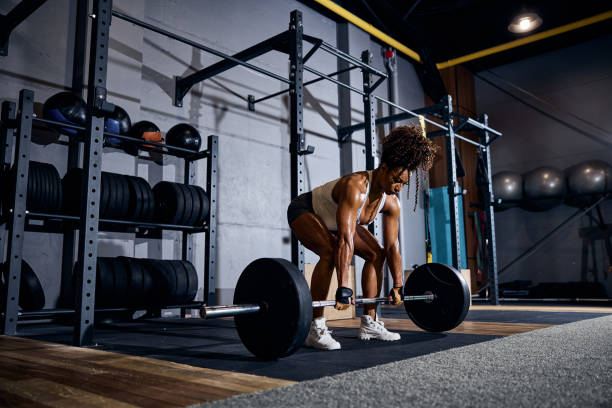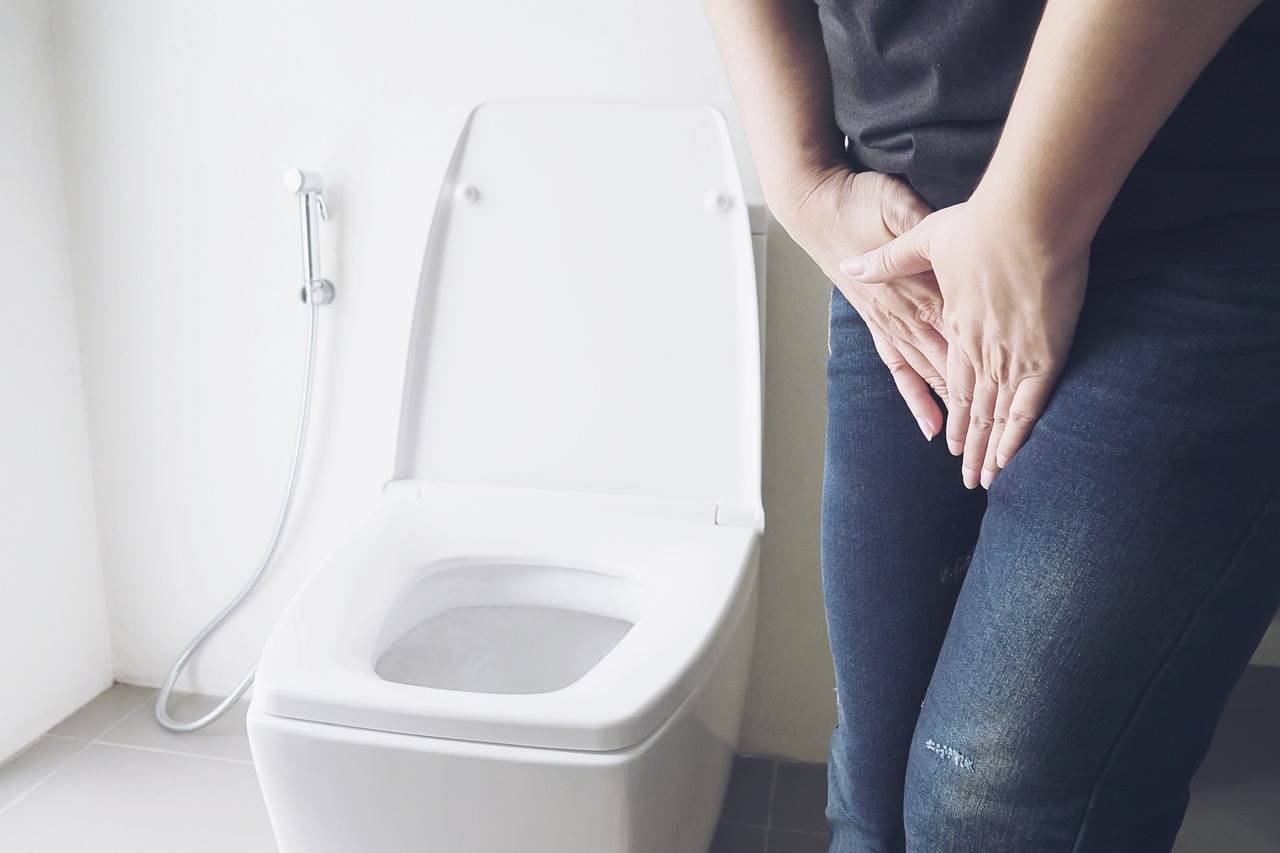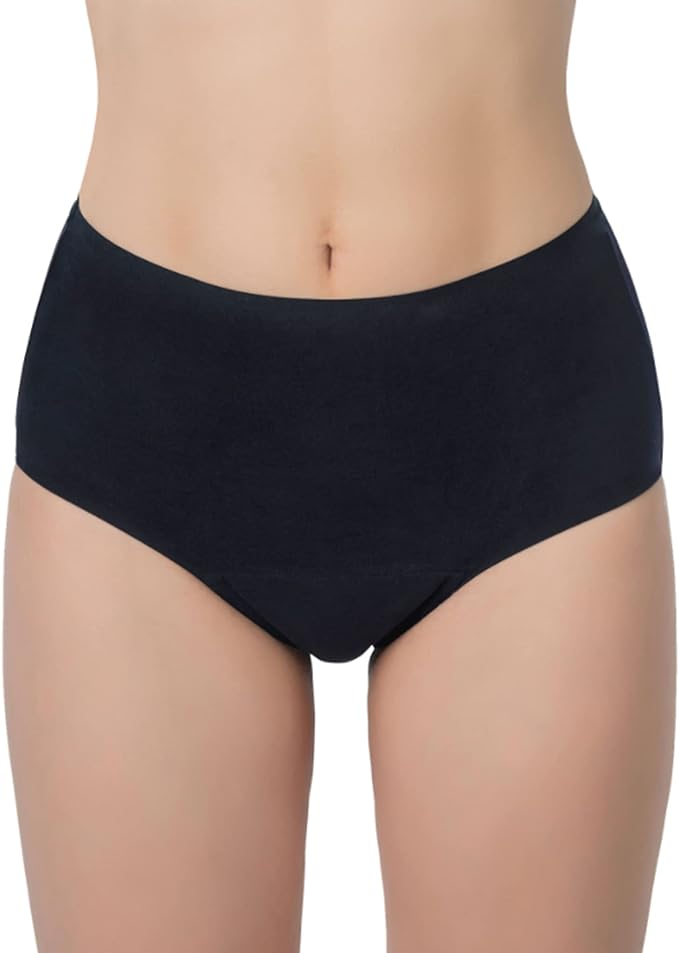Table of Contents
Understanding Why Women Experience Urinary Leakage While Deadlifting
Ever found yourself wondering why do women pee when deadlifting sometimes? It turns out that urinary incontinence is more common than you might think, and it’s not just an embarrassing little mishap; it’s a serious concern for many. Understanding this issue can empower women to tackle it head-on.
Several factors play a significant role in urinary leakage during heavy lifting, including the weight being lifted, body posture, and even how fatigued the body is. Each of these aspects can dramatically affect the pelvic floor muscles, leading to an inconvenient situation at the gym. Knowing what contributes to this problem is the first step to finding a solution.
In this article, we’ll dive into the ins and outs of urinary incontinence while deadlifting, explore common triggers, share tips for managing leakage, and emphasize the importance of pelvic floor training. Let’s break it down and start lifting with confidence!
Understanding Urinary Incontinence in Women During Deadlifting
Understanding Urinary Incontinence in Women During Deadlifting
Urinary incontinence is something many female athletes, especially powerlifters, know all too well. In fact, about half of women involved in this sport have experienced a little unwanted pee action during a heavy lifting session. And it’s not just a few; a whopping 74.5% of young female powerlifters have found themselves in these leaky situations.
So, why does this happen? Picture your pelvic floor muscles as your body’s personal leak-proof seal. Deadlifting ramps up the pressure down there big time, and that’s when stress incontinence can party crash. Because, let’s be real, pelvic floor muscles sometimes just can’t handle the extra pressure brought by all that heavy metal.
And, ladies, while cutting back on your pre-lift H2O and rocking some absorbent gear might hide the issue, they’re like putting a band-aid on a pothole. The real MVP here is a rock-solid pelvic floor. But it’s a bit of a Goldilocks situation – too tight or too weak, and you might still find yourself crossing off ‘extra showers’ on your daily activities list.
Remember, it’s not about shaming the game; it’s about knowing your body. If you’re hitting the weights and want to keep dry, maybe chat with a physical therapist for a solid game plan.
Factors Contributing to Incontinence
When it comes to urinary incontinence (UI) during deadlifting, think of it as the unpleasant surprise in a powerlifter’s goody bag. It’s not just about the heaviness of the weights hoisted but a cocktail of factors that turn the bladder into an unwelcome fountain mid-lift. Higher the weight, higher the chance of a leak. Why? More weight means more force, and that force bears down hard on the pelvic floor, which isn’t always prepped for such a pressure spike.
Let’s add another layer: body changes like menstrual bloating, a gas balloon trying to find its way out, or the stubbornness of constipation. Mix them up with lifting, and it’s pressure cooker time for urinary incontinence. And Mother Nature’s monthly gift? Well, she may tweak UI symptoms around that time of the month, making some powerlifters wish for a pause button.
Now for some stats – powerlifters seem to draw the short straw more often than their weightlifting siblings when it comes to involuntary pee breaks, with a 23.1% prevalence compared to 16.2%. New to the powerlifting scene? Brace yourself. Even if you’ve never played pantomime with your bladder before, there’s a chance those heavy bars might initiate you into the experience more frequently than if you were just lifting for fitness or cross training.
Load and Weight Considerations
36% – remember that figure, because that’s the chunk of women powerlifters who end up partying with UI. Compare this with the female athletes CrossFitting or weightlifting, and there’s a stark difference, probably because powerlifting is all about playing with the big boys of the weight world. But here’s some good news – as these strong ladies get even stronger, their muscles down under adapt, and they can say no to leaks most times unless they’re going for broke on a max out lift.
The what and how of lifting are key players here. A gravitation-shifting amount of weight? Check. Body contorting itself into different positions while playing this high-stakes game? Also, check. Cue the increased bladder pressure and you’ve got yourself a perfect storm. Get spinal alignment wrong while picking up that loaded bar, and you’ve dialed up the leak risk factor.
Body Position and Technique
Deadlifts are infamous for making the pelvic floor wave the white flag, and here’s why – spinal alignment and that darn intra-abdominal pressure going through the roof. Botch up your back curve or plumb too much depth into your squat, and your bladder’s not going to stay mum. The deadlift, with its higher risk of turning your spine into an unwilling accordion, is the most likely lift to coax out that “oops” moment.
Keeping your lifting textbook-perfect, especially when you’re feeling strong and stable (we’re talking RPE 7-8), could be your golden ticket to avoiding an unwanted mid-session splash. It’s a cruel irony that squats ramp up the pressure inside more than deadlifts, yet it’s the deadlift’s potential spinal flexion fiasco that turns the tide, bladder-wise.
The Role of Fatigue
Imagine your pelvic floor muscles are bumper cars – after a few high-speed rounds, they’re going to show some wear and tear. That’s what fatigue does – it wears down those muscles, which means they’re less likely to hold the fort when you challenge them with a beastly deadlift. Fatigue’s calling card? Tempting the bladder to let loose just when you need it to hold up its end of the bargain.
Heavy lifting puts a lot of pressure on your muscles, especially in the pelvic area, which can sometimes lead to urinary leakage during physical activities. This isn’t just a problem in powerlifting, but in any sport that pushes the body to its limits.
Understanding fatigue is like putting together a really annoying jigsaw puzzle. Get how it meshes with pelvic floor wellness, and you’ve got a fighting chance against UI – because science says that pressure cooker situation in your abdomen during hardcore exertion might just be the push your bladder needs to go rogue during your lifts.
Common Activities Triggering Incontinence
Let’s talk about a less often discussed but pretty important issue for a lot of active women out there – the unexpected “leak” while getting your lift on. You might’ve heard some ladies whispering about this at the gym or maybe you’ve experienced it firsthand during a heavy deadlift. Here’s the deal: it’s way more common than you think.
First up, deadlifts are notorious for causing a little urinary slip-up. But it’s not just the deadlifts to blame. Box jumps and those sneaky double unders can also make you wish you had packed an extra pair of gym shorts. In fact, up to 43 percent of elite female athletes, including the rhythmic movement of dancers, have had some involuntary spritz mid-workout. Ouch.
If your workout regimen includes a lot of high-impact, high-intensity movements like jumping, you’re in the zone where urinary leakage likes to show up uninvited. And here’s a tidbit you might not hear often – while leaking during your workouts may feel like a “normal” thing because it’s so common, it’s actually not something you should just shrug off. Your body’s sending some signals that shouldn’t be ignored.
So, what are the usual suspects when it comes to exercise-induced leaks?
- Deadlifts
- Box Jumps
- Double Unders
- High-Intensity Workouts with Jumping
Keep in mind, just because it’s common doesn’t mean it’s the new normal. It’s all about knowing your body and taking those signals seriously.
Importance of Pelvic Floor Training
Alright, let’s dive into the world of pelvic floor training and why it should be your new best friend, especially if you’re lifting heavy. You might be flexing those muscles and feeling like a powerhouse, but what about your pelvic floor? Research is showing that even though female athletes may have a stronger pelvic floor than their non-lifting pals, their endurance doesn’t always keep up. That’s a mismatch we don’t want, because, without endurance, you could end up with some leakage when you least expect it – like mid-deadlift.
So here’s the deal: it’s not just about having strong muscles down there; you also need to train them to go the distance. Women who get up close and personal with their pelvic floors – I mean, through assessments and learning the right exercises – often see a big difference. They’re less likely to hit up the restrooms as frequently. Plus, pelvic floor fatigue could be your nemesis when you’re pushing for that new personal best. Training for endurance can help keep things dry when you’re piling on the plates.
And let’s talk stats – a lot of women experience urinary incontinence while killing it with the weights, which pretty much seals the deal on why pelvic floor training should be a major player in your fitness routine. It’s all about keeping your sport love affair going strong without any unwanted interruptions.
Exercises for Strengthening the Pelvic Floor
Now, onto the exercises. You’ve probably heard of Kegels – they’re like the famous celeb of pelvic floor exercises. But listen, they’re not the be-all and end-all, especially if your pelvic floor has more tension than a drum or if you’re leaking a bit during those lifts. Female athletes, you see, can have a rock-solid pelvic floor and still play host to urinary incontinence three times more than their non-athletic counterparts. That tells us strength alone won’t keep you dry.
We’ve got to strike a balance between strength and relaxation; think of it as training your pelvic floor to flex and chill out. Because let’s face it, if your muscles are tense all the time, they might just throw in the towel when you need them the most. Bringing endurance into the picture alongside strength is super important – without it, you might still play the leaky faucet during compound movements like deadlifts.
And breathing – it’s key. Proper breathing gets the pelvic floor to contract and relax like a pro. This combo of strength, endurance, and breathing is the golden ticket to keep your pelvic floor game on point.
Recommended Training Regimens
When planning your ultimate training regimen, remember to romance your pelvic floor a bit – start with a warm-up that sets the mood for those muscles. It’s like a gentle nod, letting them know it’s time to work. Working with a professional, like a women’s health physical therapist, to design a custom pelvic floor program can spell out major gains for your strength and overall pelvic health.
For all the women powerlifters out there, it’s not just about the iron you’re lifting but also integrating stability, mobility, and movement strategies to protect from urinary incontinence. And don’t skimp on recovery time – remember, fatigue isn’t just about sore muscles; it could open the floodgates at unwanted times.
Remember, we’re not all cut from the same cloth, so a cookie-cutter approach to pelvic floor exercises? Not going to work. Tailor those exercises to your needs to keep pelvic floor fatigue from derailing your lifting goals. Keep these training tenets in mind and your pelvic floor might just become your most valuable player when you’re going for gold – or just your next lift.
Proper Lifting Techniques
When it comes to deadlifting like a pro, mastering the right techniques can make a world of difference. Let’s dive into the nitty-gritty of proper lifting techniques, which not only boost your power but also shield you from the unexpected trickle.
First up is the Valsalva Maneuver, a classic powerlifter’s breath-control trick. Executed with finesse, this maneuver adds some oomph to your pelvic and abdominal muscle action. It’s a power move for core stability when you’re hoisting that iron. But remember, there’s a fine line between doing it right and pushing your belly against a lifting belt in a way that actually works against you—like hitting the play button on the peeing reflex. Keep it balanced; you want to channel that inner strength, not pretend you’re fighting a bathroom break.
Cracking the code of lifting also means keeping your muscles in cahoots. The ultimate trio—your abdominal muscles, pelvic floor, and diaphragm—need to sync up in a neutral position. Why? It’s all about force transfer, baby. Get them aligned, and you’re looking at a lift that’s smoother than your favorite barista’s latte art.
But here’s the rub: sometimes, heavy lifting summons a pressure party in your abdomen that rivals your wildest New Year’s Eve bash. Good news, though. As you get stronger, your body might just adapt, crossing fingers, and toes, to let you lift bigger weights without the bladder betrayal.
Alignment and Form
Now, let’s chat about your deadlifting posture—because, let’s face it, no one wants to spring a leak mid-lift. Proper alignment and form are your trusty sidekicks in this tale.
Keeping your form on point is crucial as you face off against the heavy barbell. Think of it as building a fortress to manage the incoming storm of intra-abdominal pressure. But it’s not just about standing up straight. Oh no, we’re talking about dialed-in control of your midsection and pelvic floor to swerve past injuries and… uh, unscheduled pee breaks.
With regular training, your pelvic floor muscles might throw in the towel and get all weary. So learning to give them a chill pill is key to keeping them ready for action. And hey, a quick heads-up: lots of female athletes are in the same boat, unsure if they’re even doing their pelvic floor exercises right. So a check-in with a pro for a pelvic floor assessment wouldn’t hurt, ya know?
Now, let’s break it down real quick:
|
Keep Your Form Fab |
Why It’s a Win |
|---|---|
|
Master the Valsalva Maneuver |
Cranks up core stability |
|
Neutral muscle position |
A-1 force transfer |
|
Posture perfection |
Shields from pressure spikes and leaks |
Strategies for Lowering Risk
And for the grand finale, let’s cruise through some winning strategies to keep your gym gear dry. Starting with—drumroll, please—the lifting belt. This isn’t just a fashion statement; it’s like a hug for your pelvic floor, offering that extra support when things get heavy.
Mix it up with some low-impact vibing too. We’re talking activities that don’t shove your pelvic floor around—keep it gentle, keep it calm. Next, play around with your stance. Maybe those sumo deadlifts are your pelvic floor’s nemesis, so tweak your technique and find that sweet spot.
Wisdom also lies in knowing when to draw the line. Recognize your max lift threshold, so you’re pushing boundaries without tipping over the edge. And don’t forget, a little bit of dedicated pelvic floor R&R can go a long way. Strengthen those muscles to guard against the unwanted relax-and-release during your lift.
In a neat little list, here’s how to keep that risk meter low:
- Embrace the lifting belt for added pelvic support
- Engage in gentle, pelvic-friendly sessions
- Adjust your position for minimal pressure
- Know your limits, lift wisely
- Fortify the floor with targeted exercises
Follow these tips, and you’ll not only aim for Olympic-worthy lifts but also keep your cool and control, one deadlift at a time.
Practical Solutions for Managing Incontinence
Alright, so let’s dive into some nifty solutions for those moments when your bladder is trying to bench press along with you during those heavy lifts. Getting a handle on urinary stress incontinence (USI), especially for you powerhouse female athletes, is all about knowing the game plan and having the right gear.
Use of Leak-Proof Underwear or Pads
Now, leak-proof undies might sound like they’re only for those days Mother Nature rolls into town, but hear me out—they’ve got the chops to back you up on deadlifts too. They’re not gonna replace a pre-workout bathroom trip, but they’re ace at catching those surprise drips and saving your leggings from a public reveal. And fellas, don’t feel left out—there’s gear for you too. Slipping into these can mean squatting with swagger, without the worry of unsolicited wet patches cramping your gym style.
Choosing Appropriate Clothing
Talking about saving face (and pants), let’s chat wardrobe. Darker, patterned leggings are like camouflage for leaks. And if you need a bit more of a defense, pads or specific incontinence-friendly garments are a solid strategy. It’s not just about blending in; it’s about that mental shield knowing you’ve got cover if things get damp. Remember, it’s your workout, your choice. Stick to what makes you feel comfy and confident while you’re clocking those reps.
Managing Fluid Intake
Ever seen those athletes sipping on air and wondered what’s up? Well, it turns out some gals might play their hydration like a chess game to outsmart USI. It’s a bit of a double-edged sword, though—less water could mean less leakage, but that doesn’t fix the root issue and could bench you with dehydration. Always keep in mind, dialing down the drinks isn’t a winning long-term strategy; it’s more like a Band-Aid on a barbell. If you’re rethinking your water bottle routine, make sure it’s not at the cost of your overall health and performance.
Remember, squashing incontinence is all about understanding what ticks your body’s boxes, suiting up with the best shield, and working with those pelvic floor muscles like they’re part of your squad. It’s about management that doesn’t let those leaks dictate your limits. Keep lifting, stay strong, and let’s make unwanted pee a ghost at the gym feast.
Role of Professionals
When it comes to tackling issues like urinary incontinence, especially when it pops up during something as physically demanding as deadlifting, it’s best to call in the pros. Now, we’re not just talking about any healthcare professional; we’re talking about pelvic floor physical therapists. These folks are the specialists you want in your corner when urinary leaks, pelvic pain, or other pelvic health concerns threaten to cramp your style – and your heavy lifting sessions.
These trained experts understand the ins and outs of the pelvic floor muscles, which are kind of like the unsung heroes of your lower abdomen. When those muscles get weak, or if there’s some sort of imbalance, it can lead to pesky problems like not being able to hold your pee when you’re powering through those deadlifts.
Consulting a Pelvic Floor Physical Therapist
Now, let’s say you’re experiencing urinary stress incontinence that’s making those deadlifts more of a wet weightlifting contest. That’s your cue to hit up a pelvic floor physical therapist. These specialists are the go-to pros for getting to the root cause of your leakage woes. They’ve got the smarts to assess your situation and customize treatments and tricks to help you manage, minimize, or even say goodbye to that unsolicited pee party during your lifting sessions.
The success rates of getting help from these experts vary, with self-reported improvements in stress urinary incontinence ranging from 17% all the way up to a whopping 84%. That’s a pretty wide range, proving how individualized this issue is. Plus, they can verify that you’re doing those pelvic floor exercises the right way, which, by the way, have been proven to be genuinely helpful for stress urinary incontinence. Talk about a winning move!
Personalizing Incontinence Strategies
Alright, it’s no secret that urinary incontinence isn’t exactly a rare guest among female powerlifters, with a survey revealing that a whopping 74.5% have experienced the symptoms while training. And while some might opt for a quick workaround like preemptive toilet trips or nixing fluids, these strategies are kind of like opting for duct tape when you really need a solid repair.
Education on and the correct practice of pelvic floor exercises have been linked to a serious reduction in the severity of urinary incontinence symptoms. That’s a big deal, considering about 41% of women in powerlifting have felt that dreaded leak at least once, with just about 37% experiencing it mid-lift. Contrast that with the mere 11% who encounter the issue outside athletic activity, and you’ve got a compelling case for tailored strategies.
The emotional and physical hassle of dealing with urinary incontinence is real. It can totally squat on your motivation to train and might even push some women to quit lifting altogether. But with the right personalized approach, including help from a pelvic floor specialist, there’s hope for staying dry and pumped to power through those powerlifting routines.
Consulting a Pelvic Floor Physical Therapist
Consulting a Pelvic Floor Physical Therapist
Alright, ladies, let’s chat about something that might be a bit uncomfortable but super important: unexpected pee-escapades during heavy lifting, specifically deadlifting. If you’ve had a “whoops” moment with urinary incontinence, know that you’re not alone, and help is out there!
Our superheroes in this story are pelvic floor physical therapists. These pros are like the detectives of the fitness world, specializing in mysteries like incontinence, pelvic pain, and other pelvic floor challenges. They’re here to figure out why you might be leaking and what to do about it.
Now, here’s the deal: Partnering with a physical therapist can make a world of difference. These experts are trained to spot the nitty-gritty behind what’s causing the urinary slip-ups. Whether it’s pelvic floor muscle fatigue or something else, they can offer personalized plans to help keep you dry during deadlifts.
Getting a pelvic floor assessment can be a game-changer. It checks if you can contract those muscles like a boss, which can be key for keeping incontinence at bay. Plus, working with a specialist might improve things for you big time, with self-reported success rates ranging from 17% to 84%!
So, if those surprise leaks are interrupting your lifts, a visit to a pelvic floor physical therapist might be just what the doctor ordered. They could help turn those unfortunate “squirts” into a thing of the past.
Personalizing Incontinence Strategies
Alright, let’s chat about something that’s super common but not often talked about openly—yeah, I’m talking about urinary incontinence among female powerlifters. It’s a real thing; in fact, a pretty eye-opening survey of these iron-pumping ladies revealed that a whopping 74.5% of them have dealt with symptoms of urinary incontinence while getting their lift on.
Even though some might try quick fixes like hitting the loo before lifting, drinking less water, or even using pads, these are just Band-Aids on the problem. They don’t get to the root of it all—those key pelvic floor muscles.
But guess what? There’s some good news. When the gals get educated on pelvic floor exercises, the severity of those sneaky leaks tends to go down.
Check out these telling numbers:
- 41% of women powerlifters experienced urinary incontinence at some point.
- 37% reported leaks specifically while deadlifting those hefty weights.
- In comparison, just 11% had issues outside of the gym.
It’s not just about the inconvenience—the emotional and physical toll can zap the fun and motivation right out of training. Some women might even consider hanging up their lifting belts for good. That’s why personalizing strategies to strengthen the pelvic floor and combat incontinence can do wonders for these athletes. Keeping fit isn’t just about the biceps and abs; the pelvic floor deserves some serious gym time, too!




